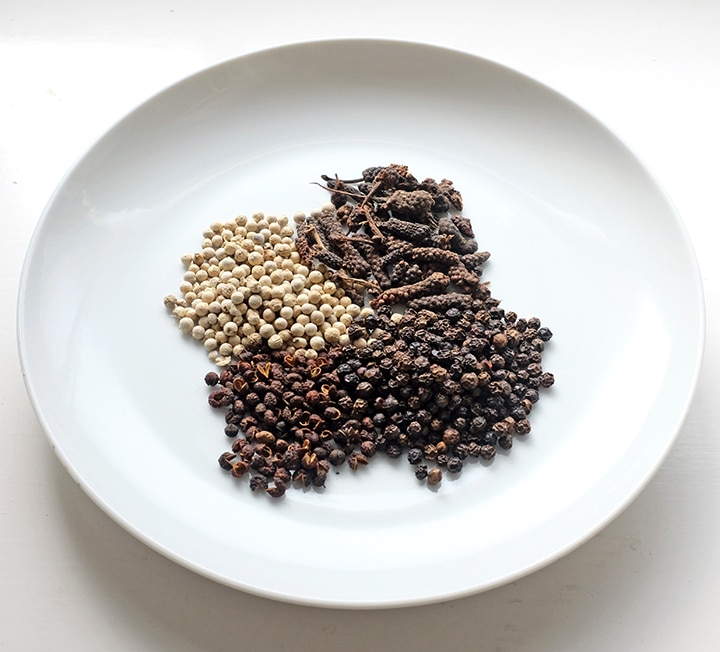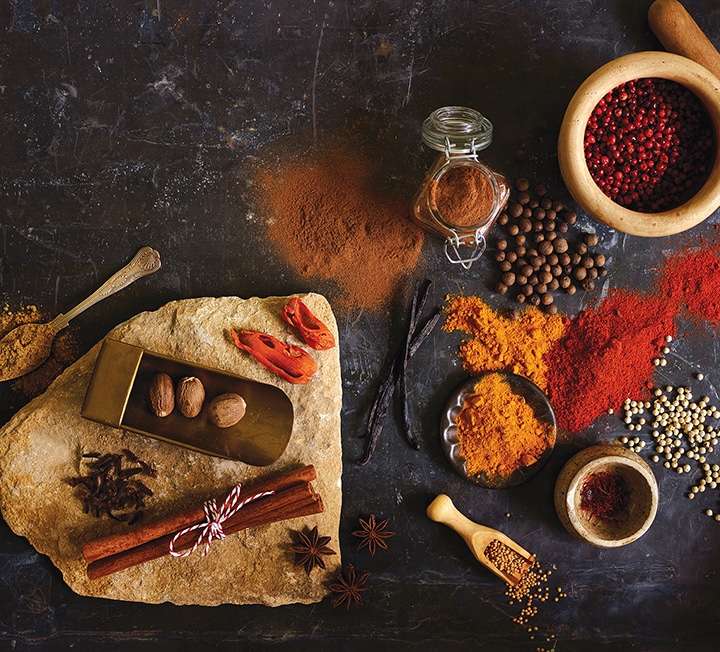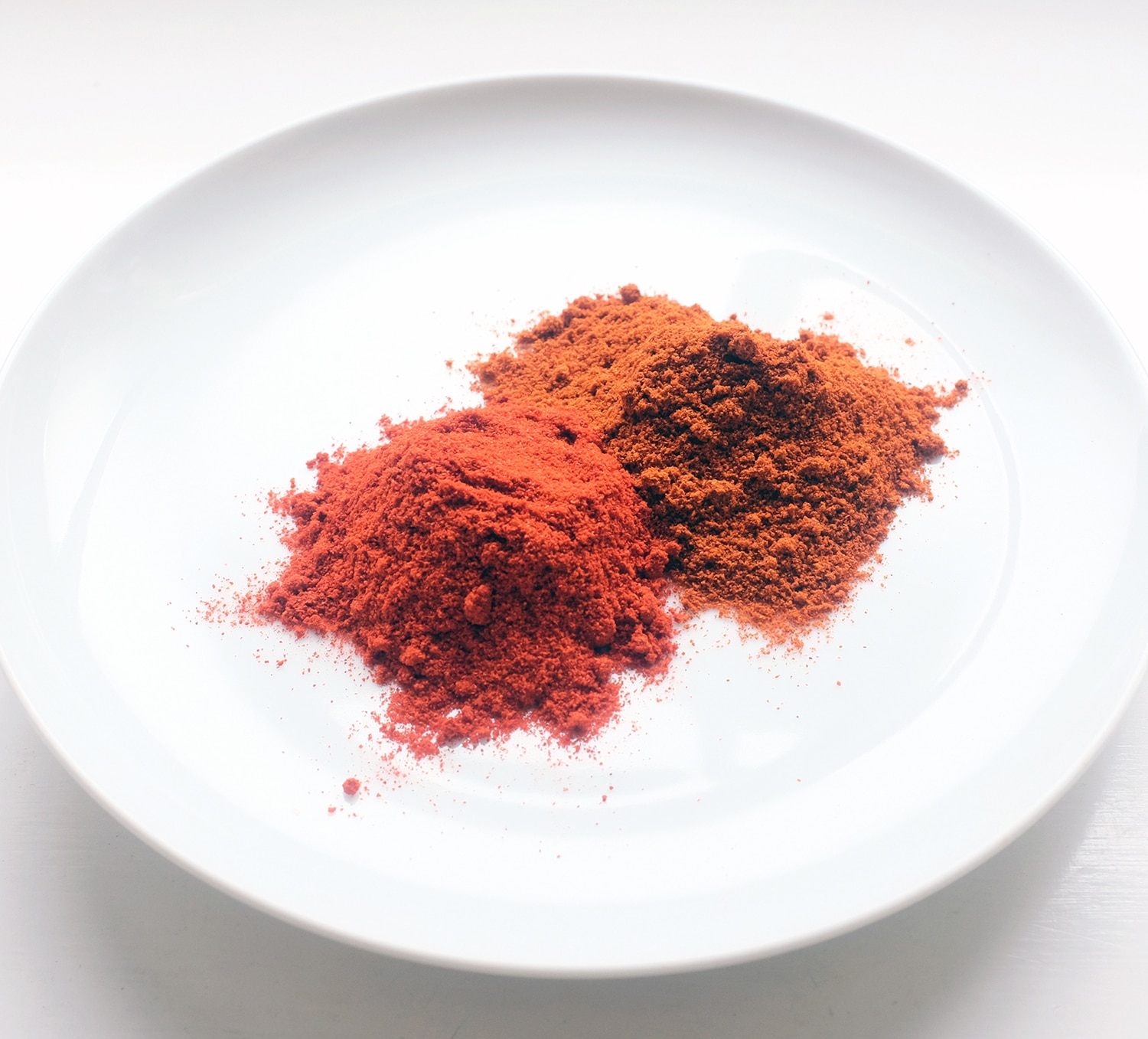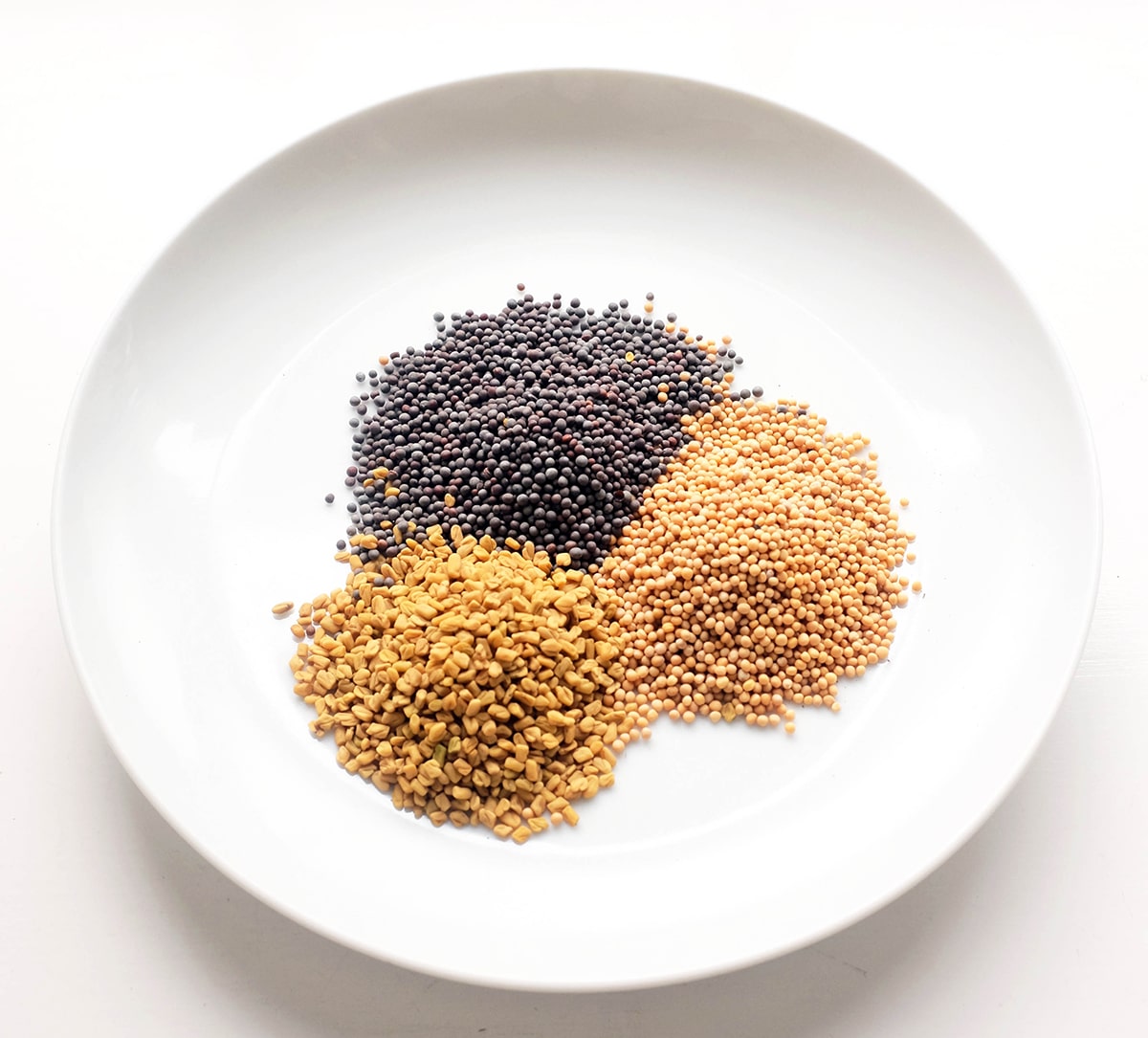The spice series: peppercorns
Ed Smith takes an in-depth look at the many spices available at the Market. This time: peppercorns


“THE AROMATICS ON THE NOSE, THE TONGUE AND THE PALATE ARE NUANCED, SOPHISTICATED AND EVER-CHANGING”
Image: Ed Smith
The throwaway line “season with salt and pepper” is one of the greatest crimes of modern recipe writing.
While pepper, like salt, brings flavour to a meal, that flavour is its own, not something in the food already that’s been emboldened and emphasised, in the way it might be by the addition of sodium chloride. In fact, a grating of pepper is akin to adding a dusting of paprika, or a sprinkle of crushed cumin seeds – it is very definitely a spice, and an ancient one at that.
Pepper has a fruity history and a defined, rather than generic, purpose. The aromatics of peppercorns received by the nose, the tongue and the palate are nuanced, sophisticated, and ever-changing. Our senses are stimulated by them. Certain varieties even numb and tingle.
To avoid confusion, I should note at the outset that I will use ‘pepper’ and ‘peppercorn’ interchangeably in this piece. Of course, in both instances I am referring to the spice, not the fruit of the capsicum plant (bell peppers, romano peppers etc).
There are many varieties of peppercorns (and some imposters too). Spice Mountain stocks nearly 20 of them. We can’t cover them all in this piece, so instead I’ll provide a potted history, before highlighting a few of the key varieties.
Peppercorns are the fruit of a flowering vine from the plant family piperaceae. Though native to India (particularly, the south), peppercorns grow across Asia and the Indian sub-continent and have done almost since records began. Vietnam is a huge producer. The main one, in fact. Though Indonesia, Nepal, China, Malaysia and of course India are major pepper players too.
We take pepper for granted, but it’s usually cited as the most or second most traded spice in the world (depending whether you count chilli as a spice), and until modern times was also one of the most valuable.
Black peppercorns
The most common type is the black peppercorn, though there are a number of varieties.
Black peppercorns are the blanched and then dried unripe ‘drupes’ of the pepper plant. They grow in a long bunch and are picked off once dried and blackened.
Their fruity, hot aroma is evident when crushed or ground, and they don’t require the kind of toasting that other spices do to refine and release their oils. Typical tasting notes include grassiness, a little citrus, and musty, dry heat.
It’s best to buy peppercorns whole and grind them only at the point of use, as it loses its aroma quickly. For similar reasons, it’s best to add pepper at the end of the cooking process. In fact, these tips relate to all colours of peppercorns.
As you can see from walking round Spice Mountain, we are spoilt for choice of black peppercorn. Celebrated varieties include the Tellicherry pepper, cubeb pepper, Sarawak pepper and Vietnamese peppercorns.
The Tellicherry pepper is regularly cited as the very best of the peppercorns. They’re grown on the Malabar coast in Kerala, southern India, and are notable for their size and pungency. Tellicherry peppercorns are over-ripened on the vine, so are almost bloated before being picked. They’re bright, sweet and fruity, and have a hint of pine freshness.
Cubeb pepper is from Indonesia. It’s quite easy to pick out from a normal black peppercorn because the stalk of the cubeb remains like a tail. Spice Mountain suggests using cubeb pepper in north African cooking, and I can see exactly why; there’s a touch of allspice and citrus note to it, which would go really well with food from that continent.
Sarawak pepper is from Malaysia. It’s bold and woody and warm and cracking over rich meats or in coconut-based curries.
Vietnamese peppercorns are probably the black peppercorns you have in your supermarket stocked grinder. Perfectly good for everyday cooking.
Green peppercorns
Though you may be disappointed to learn that pink peppercorns are a complete imposter and not a peppercorn at all, green ones are. In fact, these are the fresh ‘drupes’ of the pepper plant, which would become black were they to be blanched and dried. They’re technically unripe, and are often salted or brined to preserve them. Green peppercorns are a staple of Thai and Vietnamese cooking, though have also made themselves known in French cuisine. Delia Smith loves them too.
White peppercorns
White peppercorns are the seeds of the pepper fruits. They’re from the same plant as black and green peppercorns, but to obtain the seeds, the fully ripe and now red fruits are soaked in water until the flesh starts to decompose, allowing the seed to be revealed following a little rubbing. This is then dried out for use. White pepper has a very different flavour to black. There’s a musty and indeed mustardy-ness to it. Many Escoffier-style, French, cream-based or puréed potato dish relies on it to bring warmth without flakes of black spice. It’s also important in Chinese and Thai cooking.
Long pepper
Indonesian or Java long pepper is of the piperaceae family, but looks very different to all the other peppercorns. Rather than growing in a cluster of little berries, a long pepper is one, well, long pepper. Usually about two to three centimetres, it’s a tightly-packed fruit which is picked and dried in the same way as black peppercorns, and has similar hot and citrus characteristics. But it’s also a little bit like cassia bark, with a hint of eucalyptus. It’s really something worth seeking out, and then using as you would other peppers – ground over red meats or into rich stews and curries.
Sichuan peppercorns
Just to add one last element of confusion, Sichuan peppercorns are not technically peppercorns as they’re the fruit of a different family of plants in the citrus (rutaceae) family. Which explains the definite lemony-lime flavour to them, if not the numbing effect they have on the tongue, or their potent heat. There are a number of varieties, though red hulled ones, whole green ones and the Nepalese brown ‘peppercorns’ are particularly common. Be warned: once you’ve become accustomed to the wizardry of Sichuan peppercorns, it’s hard to turn back.
Culinary uses
Having written at the top that pepper is not a mere seasoning, I would like to backtrack a little and note that a scattering does, on many occasions, enhance a dish or ingredient.
Certain roots and tubers, for example, love a heavy grind of black pepper – in particular swede, turnips, celeriac, carrots and potatoes when boiled, mashed or gratinated. Ditto brassicas like cabbage and kale. Mushrooms seem to love pepper too, not least once they’ve been fried in butter. Beef is partial to a generous coating as well; I’m thinking on top of the charred crust of a just-cooked steak, into the rich stock of a beef bourguignon, or over slices of a roast rib joint. To my mind oily fish like salmon and trout go particularly well with the spice. Also, anything relating to melting cheese and white sauces benefits from the must of peppercorns; classically, it should probably be a pinch of white peppercorn, but black pepper is fine. And no pork sausage is a good pork sausage without loads of black pepper in the mix.
There are also a wide range of dishes that rely on peppercorns as a vital ingredient.
Prince of them all is cacio e pepe, the Roman dish which translates directly as ‘cheese and pepper’, because aside from pasta the only ingredients are (or should be) pecorino, pepper and a dash of the water in which the pasta boils. It’s a brilliant example of how commanding and flavoursome pepper can be.
Unsurprisingly given where peppercorns are generally grown, a number of Asian dishes make the most of them as a flavour. You will find multiple versions of black pepper chicken and tofu dishes across the various regions of mainland China. Similarly in India, chicken and paneer that have been heavily coated in black pepper are mainstays of tandoor and dry-style curries.
There’s barely a dish in Sichuanese cuisine which isn’t powered by the citrus tingle of Sichuan peppercorns. Both red and green peppercorns are essential in good hotpot restaurants (slowly infusing their heat and scent into the broth and indeed your clothes), and classic dishes like mapo tofu, kung pao chicken and dry fried green beans are all the better for the spice.
And it may surprise many to know that black pepper is a particularly good match with certain acidic fruits, and therefore it’s a spice you might encounter at the end of a meal. For example, there are multiple recipes out there that involve freshly grinding black peppercorns over strawberries, or pieces of pineapple and mango. Many more where the spice is added to a sorbet or ice cream of those same fruits. It’s a super match, again highlighting peppers as a spice with a unique and appealing flavour.
See Ed’s recipe for onglet with Tellicherry & long pepper sauce.


